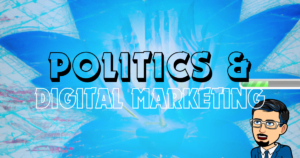
The Bharatiya Janata Party is one of the major political parties in India known for its Hindu nationalist ideology and conservative stance on various social and economic issues. Founded in 1980, the Bharatiya Janata Party has become dominant in Indian politics, winning several national and state elections. The party’s key policies include promoting economic development, national security, and cultural nationalism. Under the leadership of figures like Narendra Modi, the Bharatiya Janata Party has implemented various initiatives focusing on infrastructure development, digital governance, and social welfare programs. In Indian politics, The party’s electoral success has been attributed to its strong organizational structure, effective communication strategies, and ability to connect with a diverse voter base across the country.
The Bharatiya Janata Party is a prominent political party in India known for its nationalist and conservative ideology. The party has utilized advertising strategies effectively to reach a wide audience and engage with voters. Through digital marketing channels such as social media campaigns, targeted advertisements, and online outreach programs, the Bharatiya Janata Party has successfully connected with the tech-savvy Indian population, especially the youth. By leveraging digital platforms & using online marketing techniques effectively, the party has disseminated its message, mobilized supporters, and influenced public opinion, contributing to its electoral success in recent years.
In recent years, the landscape of political campaigning in India has witnessed a significant transformation with the advent of advertising. Political parties like Bharatiya Janata Party, Shivsena, Indian National Congress, etc.. across the spectrum are increasingly turning to digital platforms to reach out to voters, convey their messages, and mobilize support. In this blog post, we will explore how internet marketing is reshaping campaigns in India and the various ways in which it benefits political parties.
- Targeted Outreach: One of the key advantages of advertising for political parties is the ability to target specific demographics and segments of the Indian population. Through tools like social media advertising and email marketing, parties can tailor their messages to resonate with different voter groups based on age, location, interests, and more. This targeted approach helps parties reach the right audience with the right message, increasing the effectiveness of their advertising campaign efforts.
- Real-Time Engagement: advertising enables political parties to engage with voters in real-time, fostering two-way communication and dialogue. Platforms like Twitter, Facebook, and Instagram provide a direct channel for parties to interact with constituents, address their concerns, and respond to feedback promptly. This level of engagement helps build trust and credibility among voters, ultimately strengthening the party’s relationship with its supporters.
- Data Analytics: internet marketing tools offer powerful analytics capabilities that allow political parties to track and measure the performance of their campaigns in real-time. By analyzing data on engagement rates, click-through rates, conversion rates, and more, parties can gain valuable insights into the effectiveness of their messaging and strategies. This data-driven approach enables parties to make informed decisions, optimize their campaigns, and allocate resources efficiently for maximum impact.
- Cost-Effective Campaigning: Compared to traditional forms of advertising such as TV ads or print media, advertising offers a more cost-effective way for political parties to reach a wider audience. With targeted advertising options and flexible budgeting, parties can run campaigns that suit their financial constraints while still achieving significant reach and impact. This cost-efficiency makes advertising an attractive option for parties looking to maximize their campaign resources.
- Grassroots Mobilisation: digital marketing empowers political parties to mobilize grassroots support and organize volunteers more effectively. Platforms like WhatsApp and Telegram enable parties to create community groups, share updates, coordinate events, and rally supporters for various campaign activities. By leveraging online marketing tools for grassroots mobilization, parties can amplify their reach and influence at the local level, driving greater engagement and participation among voters.
In conclusion, Indian politics is diverse & dynamic, digital marketing has emerged as a game-changer for political parties such as Bharatiya Janata Party, Shivsena, and Indian National Congress, etc. in India, offering a plethora of benefits that enhance their campaign efforts and outreach strategies. By leveraging the power of digital platforms and using online marketing techniques, political parties, for example, Bharatiya Janata Party, can engage with voters more effectively, target specific demographics, analyze campaign performance, optimize resources, and mobilize grassroots support with greater efficiency. As technology continues to evolve, the role of digital marketing in shaping political campaigns is only set to grow, revolutionizing the way parties connect with voters and drive electoral success. Digital marketing can also be a better career option for the future for those who want a skilled and better job.


